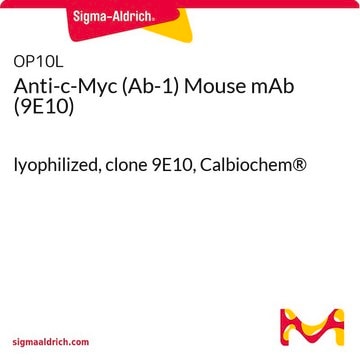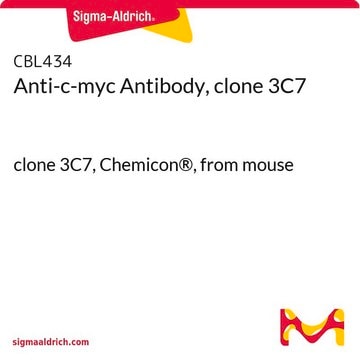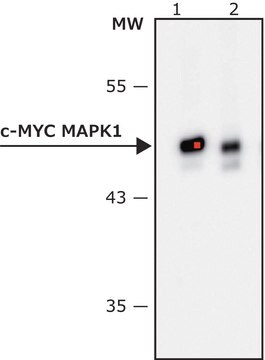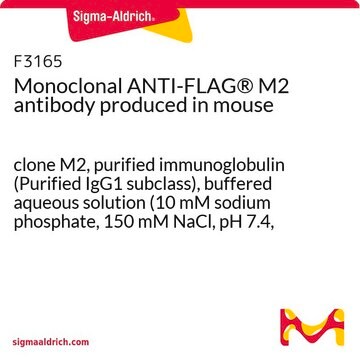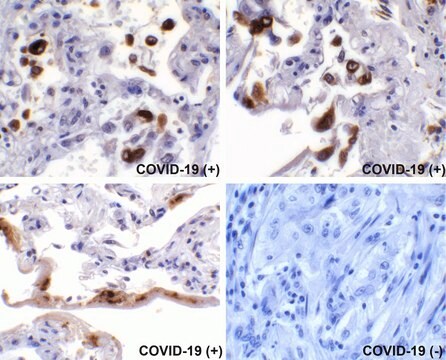OP10
Anti-c-Myc (Ab-1) Mouse mAb (9E10)
liquid, clone 9E10, Calbiochem®
About This Item
Javasolt termékek
biológiai forrás
mouse
Minőségi szint
antitest forma
purified antibody
antitest terméktípus
primary antibodies
klón
9E10, monoclonal
form
liquid
tartalmaz
≤0.1% sodium azide as preservative
faj reaktivitás
rat (weakly), human, mouse (weakly)
gyártó/kereskedő neve
Calbiochem®
tárolási körülmény
do not freeze
izotípus
IgG1
kiszállítva
wet ice
tárolási hőmérséklet
2-8°C
célzott transzláció utáni módosítás
unmodified
Géninformáció
human ... MYC(4609)
mouse ... Myc(17869)
rat ... Myc(24577)
Általános leírás
Immunogen
Alkalmazás
Frozen Sections (2-10 µg/ml)
Immunoblotting (1-5 µg/ml, see application references)
Immunofluorescence (1-5 µg/ml or use Cat. No. OP10F)
Immunoprecipitation (1 µg/sample)
Chromatin Immunoprecipitation (5 µg/ml, see application references)
Paraffin Sections (not recommended)
Kiszerelés
Figyelmeztetés
Fizikai forma
Analízis megjegyzés
HT1080 cells
HL-60 cells or lung carcinoma
Egyéb megjegyzések
Cole, M.D. 1986. Ann. Rev. Gen.20, 361.
Nisen, P.D., et al. 1986. Cancer Res.46, 6217.
Nau, M.M., et al. 1985. Nature318, 69.
Persson, H., et al. 1984. Science225, 687.
Alitalo, K., et al. 1983. Proc. Natl. Acad. Sci. USA80, 1707.
Jogi információk
Nem találja a megfelelő terméket?
Próbálja ki a Termékválasztó eszköz. eszközt
Tárolási osztály kódja
10 - Combustible liquids
WGK
nwg
Lobbanási pont (F)
Not applicable
Lobbanási pont (C)
Not applicable
Analitikai tanúsítványok (COA)
Analitikai tanúsítványok (COA) keresése a termék sarzs-/tételszámának megadásával. A sarzs- és tételszámok a termék címkéjén találhatók, a „Lot” vagy „Batch” szavak után.
Már rendelkezik ezzel a termékkel?
Az Ön által nemrégiben megvásárolt termékekre vonatkozó dokumentumokat a Dokumentumtárban találja.
Tudóscsoportunk valamennyi kutatási területen rendelkezik tapasztalattal, beleértve az élettudományt, az anyagtudományt, a kémiai szintézist, a kromatográfiát, az analitikát és még sok más területet.
Lépjen kapcsolatba a szaktanácsadással